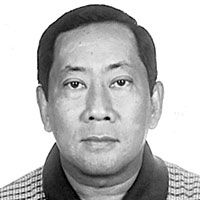RH or RP Bills: Our umbilical cord to the US?

Just because two US Senators, namely Sen. Daniel Inouye and Sen. Thad Cochran, visited the Subic Bay Freeport, the leftist media suddenly goes on a fit and this was headlined yesterday by the Philippine Daily Inquirer about the fear of the return of the US Military Bases in Philippine soil. Hence, this obscure visit by the two US Senators now triggers a debate whether we should once more allow US bases in our country or not? If you ask me, we are playing into the paranoia of the leftists.
Anyway, I do recall how the leftist did countless rallies against the presence of the US Military bases, pinpointing that this was an “umbilical” cord of US colonialism and worst of all, the US servicemen made prostitutes out of Filipino women. A year ago, I attended the 14th Balloon Festival in Clark Air Base and I asked a friend to bring me to downtown Angeles City and lo and behold, the sex bars, the pimps and yes, the old US servicemen who have since retired are still there. Hence, pimps and prostitutes are as common in the City of Angels as it was when the Yanks were stationed here.
What the Philippines actually lost by booting out the US Military from our soil is felt mostly by the Armed Forces of the Philippines (AFP). In the past, we got more than we could afford in military ordnance, trucks, jeeps, ships and aircraft and yes, even free aviation gasoline for Philippine pilots flying in Subic Naval Station or in Clark Air Force Base. If there is still an “umbilical” cord that links the Philippines to US interests, it is the RH or Responsible Parenthood Bill, which Pres. PNoy is supporting and, which is being pushed by US State Department Sec. Hilary Clinton.
* * *
At 10:00 o’clock tomorrow morning, the University of San Carlos Press will formally launch the book of Jovito Abellana entitled “My Moments of War to Remember By” at the Gregorio and Jovito Abellana Gallery at the Museo sa Sugbo, the old Cebu Provincial Jail turned into a museum and art gallery. This book is really the memoirs of Jovito Abellana that he wrote during the Japanese occupation of Cebu at the height of World War II.
This is especially important to me because my good friend and Cebu historian Prof. Jobers Bersales asked me to write the introduction of this book. In truth, it is the first time that I have ever written a book introduction and what makes it more daunting is the fact that I never met Mr. Jovito Abellana and very little has been written about him. Sadly, I cannot attend tomorrow’s launching because of my annual Big Bike Convention in Davao.
What we know about Jovito Abellana is that he was born on Feb.15, 1907 in Mambaling, Cebu. He married Lourdes Navarro in 1932, and later became Deputy Governor of Zamboanga del Sur in the early 1960s. In fact there is a barrio in Pagadian that he named after his wife Lourdes. He is a trained bookkeeper and in the 1930s and the early 1940s, he worked for the Visayan Electric Company (VECO) to look for coal in Compostela and in Danao.
Jovito Abellana dabbled in art, studying sculpture under the Italian expat Dante Guidetti. If my memory serves me right, Guidetti did a magnificent sculpture of the Archangel Michael inside the Spanish cementer in the old Carreta cemetery, though I’m not a hundred percent sure of this. Learning from the Italian master, Jovito Abellana did a statue of Christ the King at the Cebu Cathedral in the 1930s.
Jovito was the cousin of Gov. Hilario Abellana, the Cebu Governor during the Japanese occupation, whom the Japanese later executed. In fact, his memoir centered on what civilian life was in Cebu during those dark days. He even mentions that Cebu City was literally “fenced,” with Japanese sentries guarding the entry and exit points of the city. I have read many exploits of the Cebuano guerrillas during World War II as written by my uncle Col. Manuel F. Segura entitled “Tabunan” and “The Koga Papers.” While Abellana helped the guerrillas, which makes him one of them, his book centered on the ordinary life of the civilian populace in Cebu.
He was eventually arrested by the dreaded Kempeitai and tortured in 1994 at the infamous Kempeitai headquarters, which is the Cebu Normal University (CNU) main building today. After the war, Jovito was appointed Cebu City Councilor under then Mayor Vicente del Rosario in 1946 and served for a one-year term. He became a member of the Cebu Historical Society from 1950 until 1980, when the organization was disbanded. He died in 2005.
At this point, I urge our readers to get a copy of this book because this is a rare book in the sense that few people wrote their thoughts on the life of Cebuanos under the Japanese occupation. I exhort the Department of Education (DepEd) to make this book a required reading for Cebuano students so that our future generation of Cebuanos will never forget that once upon a time, Cebuanos lived under a merciless and brutal foreign occupier and freedoms were lost.
* * *
For email responses to this article, write to [email protected] or [email protected] . His columns can be accessed through www.philstar.com.
- Latest
- Trending




























